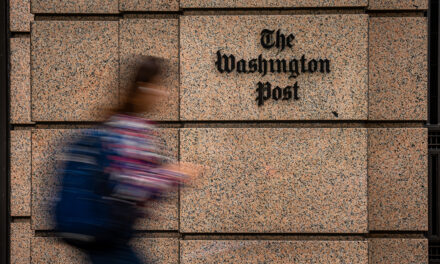We support our Publishers and Content Creators. You can view this story on their website by CLICKING HERE.
Donald Trump by all accounts survived another assassination attempt earlier this month when Secret Service agents engaged a rifle-wielding man lying in wait in bushes adjoining a hole at his private golf club in West Palm Beach, Florida, where the former president was playing.
As is so often the case after high-profile incidents involving the criminal misuse of firearms, a lot of gun control activists immediately took to the internet with their “hot takes,” declining to wait for correct information to come to light or to analyze whether their initial gut feelings had any relationship to reality.
And, as usual, many of these immediate hot takes really missed the mark. Here are three of the most common assertions erroneously made in the days following the second known attempt to assassinate Trump.
1. This happened because of “weak” gun laws.
Right on cue, many major gun control organizations insinuated that “weak gun laws” were to blame not only for the assassination attempt but basically for all social ills.
As with the first assassination attempt on Trump, these groups made no effort to explain which of their much-touted “stronger” gun laws, specifically, would’ve prevented this individual from committing this specific criminal act, or how.
Since he is 58 years old, the second gunman’s actions certainly wouldn’t have been hindered by age-based restrictions on gun sales.
Nor was the gunman’s attempt to kill Trump facilitated by Florida’s recent change to its permitless public carry law, which (to the chagrin of gun control activists hoping to place as many barriers as possible between ordinary Americans and their rights) authorizes all non-prohibited adults to carry concealed handguns in public after first obtaining special licenses.
Not only was the gunman a convicted felon who couldn’t lawfully possess any firearm, much less carry one in public, but Florida law continues to prohibit the open carrying of long guns in public places.
Moreover, no reasonable person believes that a highly motivated criminal willing to commit premeditated murder with an illegally possessed rifle would have been dissuaded from doing so just because of public carry restrictions.
Moreover, as with the first gunman who attempted to assassinate Trump (at a campaign rally in Butler, Pennsylvania), there’s no evidence that Florida’s supposedly lax public carry laws confused Trump’s security detail or led it initially to downplay the severity of the threat posed by a rifle-wielding man setting up a sniper’s nest several hundred yards from a former president and current presidential candidate.
Looking at the standard “wish list” of laws supported by gun control activists, the only proposal that might plausibly come into play is their desire to eliminate private intrastate gun sales—i.e., “universal background checks.” For several reasons, however, it seems unlikely that a federal version of that law would have mattered.
It’s not yet clear precisely when or how the gunman in Florida got his rifle. But since he’d been a prohibited person for more than two decades, we can safely assume he didn’t buy it from a licensed seller within the past 20 years.
Several other possibilities remain. He may have lawfully purchased the rifle prior to becoming a prohibited person and illegally retained possession of it. That would hardly be surprising, as even states such as California—with their universal gun registration laws—struggle to confiscate guns from tens of thousands of prohibited persons whom officials know failed to surrender their previously lawfully possessed guns.
In theory, the gunman also could have purchased the rifle via a private intrastate sale by an unlicensed seller who acted in good faith, not knowing the buyer’s status as a prohibited person.
Such a sale still would have been completely illegal on the gunman’s part. It also would mean that he most likely kept the rifle stored somewhere (or with someone) in North Carolina after moving to Hawaii. Taking it back-and-forth from one of the nation’s most restrictive gun states would’ve required him to formally declare the rifle with an airline, an incredibly high-risk move for a convicted felon.
To be even quasi-legal, such a private gun sale also must have occurred prior to 2018, when the gunman moved to a state that effectively bans private sales.
In fact, if the gunman took possession of the rifle within the past six years, it by definition was through an illegal sale. No, he couldn’t just bypass Hawaii’s de facto prohibition on private sales by buying a gun in another state—at least not legally. Interstate sales must be conducted by licensed sellers, who are legally obligated to conduct background checks and ensure a sale complies with all laws of the buyer’s state of residency.
Most likely, however, the gunman either bought the rifle “off the street” in an illicit, black-market transaction with a seller who knew or didn’t care whether he was a prohibited person or he obtained it through an illegal straw purchaser.
Authorities said the serial number on the gunman’s rifle had been obliterated, an illegal technique commonly employed by black-market dealers and straw purchasers because it significantly hinders the ability of law enforcement to trace the weapon back to its last transaction through a federal firearms licensee—and thereby potentially work out a chain of custody that could incriminate the dealer or straw purchaser.
Finally, even if the gunman got his rifle through an otherwise lawful private sale, it’s quite the stretch to suggest that he could not just as easily have gotten it the same way as the vast majority of criminals—illegal black-market sales by people lacking any motivation or incentive to abide by federal gun sale laws.
2. The gunman used an “assault-style” AK-47 rifle.
Perhaps one of the most commonly repeated gun control talking points is that the gunman in Florida used an “assault weapon,” allegedly demonstrating why we should ban these firearms.
To be fair, this seems to stem from the fact that many major media outlets repeatedly have mischaracterized the gunman’s SKS rifle as an “AK-47” or “AK-style” gun, likely due to ignorance.
Based on photos released by law enforcement and other official documents, the rifle at issue seems to be a semiautomatic SKS platform that’s been mildly “sporterized” from its original World War II-era design. The most notable modifications were replacing the straight stock with what appears to be an Ansch?tz grip and substituting the internal box magazine for a detachable one.
The differences between an SKS platform and AK platform are more than just technical specifics or mere semantics.
For purposes of the “assault weapons” debate, the differences are inherently legal.
Typically, the statutory distinction between a prohibited “assault weapon” and its “non-assault counterpart” is the presence of one or more specific “military-style” features, such as a collapsing stock, barrel shroud, pistol grip, or vertical foregrip. Although an AK platform utilizes a pistol grip (rendering it, for statutory and “visual” purposes, an “assault weapon”), the gunman’s SKS-platform bears none of these prohibited features.
To the extent the rifle qualifies as an “assault weapon” under any current state law, it’s only because some states (such as California and Illinois) also prohibit hundreds of specific semiautomatic rifle models for seemingly arbitrary reasons, regardless of whether they otherwise meet the quasi-objective “feature-based” definition.
Even in those states, the SKS is considered a perfectly lawful “nonassault” weapon as long as it utilizes a “fixed magazine” instead of a detachable one, even though internal box magazines may be reloaded with stripper clips just as easily as empty detachable magazines may be replaced with fully loaded ones.
Not that any of these distinctions are relevant in the context of rendering the rifle “less lethal” or less capable of being used to kill at a distance. Consider that the bolt-action rifle used to kill President John F. Kennedy ironically would not be considered a “military-style” assault weapon by modern gun control activists despite having been literally designed for and used by the Italian army.
3. Blame Trump—he’s the one who made it easier for crazy people to get guns.
As just one example, in a viral post on X one major left-leaning account reasoned: “Here’s irony for you. Trump ended laws preventing the mentally ill from owning guns. This is the second attempt where a mentally ill person with a gun tried to assassinate him.”
You’ll be shocked, I’m sure, to learn that none of this is true.
First, Trump never “ended laws preventing the mentally ill from owning guns.” Presumably, this poster and others are referring to Trump’s role in rescinding a highly controversial, Obama-era administrative rule promulgated by the Social Security Administration.
That rule, which went into effect just days before Trump took office in 2017, required the agency to report to the National Instant Criminal Background Check System as “prohibited persons” anyone using a representative payee to help manage disability benefits.
As a result, an estimated 75,000 Americans would be stripped of their Second Amendment rights without the slightest bit of due process—no hearings, no individual medical assessments declaring them dangerous, and no opportunity for rebuttal. Worse, at the time these individuals requested or were assigned representative payees, none of them had any reason to believe the decision would dramatically affect their right to keep and bear arms.
The Obama administration rule was staunchly opposed not just by pro-gun groups, but by dozens of national organizations that traditionally have supported greater restrictions on the exercise of Second Amendment rights. The American Civil Liberties Union, for example, denounced the rule as lacking any basis in reliable evidence or solid data, particularly with respect to whether those whose rights were stripped had any increased propensity toward violence.
As president, Trump didn’t unilaterally rescind the rule, which he doubtless could have done. Instead, he signed legislation passed by Congress with bipartisan support that prohibited the Social Security Administration from reporting recipients to the background check system as mentally unfit merely because they had a representative payee.
The unpopular and unconstitutional nature of the rule notwithstanding, there’s absolutely no evidence that either gunman accused of trying to assassinate Trump ever received disability payments, much less required a representative payee to manage those benefits such that the rule plausibly would have resulted in their being reported to the National Instant Criminal Background Check System, or NICS.
To the extent there’s any irony to these viral claims, it’s not based either on the gunman’s mental state or Trump’s role in overriding a controversial administrative rule with limited reach. No, the irony is that the second suspected gunman is a convicted felon whose name was already on the NICS list of prohibited persons when the Obama-era rule took effect, and he remained a prohibited person even after Congress overrode it.
In conclusion, there’s truly nothing new under the sun when it comes to gun control activists in the wake of concerning national headlines. They’ll say just about anything to cast the blame on lawful gun owners and insist that our rights be restricted further, regardless of how little capacity their laws actually have to render us all safer.
Their proposed laws certainly wouldn’t have made a difference for Donald Trump.

 Conservative
Conservative  Search
Search Trending
Trending Current News
Current News 





